Mar
29
2022
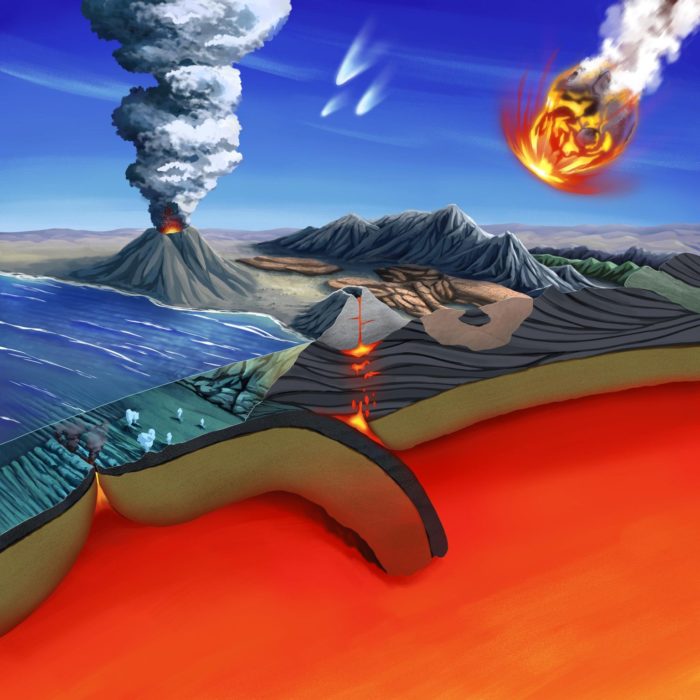 As the number of confirmed exoplanets grows (we just passed the 5,000 mark) attention is turning toward determining more about these planets orbiting other stars. The most compelling question, of course, is whether or not they are capable of containing life, and if they actually do have life. If a planet did sport life around a star tens or hundreds of light years away, how would we know? There are two basic approaches – looking for technosignatures and biosignatures. A technosignature is a sign of advanced technology, like heat radiating from a massive structure. But this also requires an advanced technological civilization, not just life. Biosignatures are just signs of life, even simple bacteria.
As the number of confirmed exoplanets grows (we just passed the 5,000 mark) attention is turning toward determining more about these planets orbiting other stars. The most compelling question, of course, is whether or not they are capable of containing life, and if they actually do have life. If a planet did sport life around a star tens or hundreds of light years away, how would we know? There are two basic approaches – looking for technosignatures and biosignatures. A technosignature is a sign of advanced technology, like heat radiating from a massive structure. But this also requires an advanced technological civilization, not just life. Biosignatures are just signs of life, even simple bacteria.
There are two primary biosignatures that scientists are currently interested in, oxygen and methane. These two gases have in common that they are produced by the biochemical activity of life (at least on Earth) and they are highly reactive and therefore short-lived in an atmosphere. Therefore if they exist they are being constantly replenished, and one potential source is life.
For completeness you may remember the possible detection of phosphene in the upper atmosphere of Venus. Phosphene is another potential biosignature, raising the possibility of critters living in the clouds of Venus. But later analysis concluded that the detection was likely a mistake, the signal coming from another more common source not indicative of life.
All of these potential biosignatures have another thing in common – they can be released by non-living sources. This makes them problematic as biosignatures. Just detecting oxygen is not enough, we can’t pop the corks yet. Further analysis is necessary to determine the likelihood of a biological vs non-biological source for any of these putative biosignatures, and that is where recent work has been focusing. A 2018 paper, for example, examines the characteristics of an oxygen signature that will help us rule out a “false positive” biosignature using spectrographic, photometric, and time-dependent analysis.
Continue Reading »
Mar
22
2022

Spending extended time in space presents many challenges, on of which is prolonged microgravity. Artificial gravity through rotation is not yet practical. We may see rotating space stations this century, but not space ships, and there are no practical concepts for how to produce artificial gravity on the Moon or Mars. NASA’s approach to this and other similar problems is mitigation – they can’t prevent the problem, so learn to deal with its effects. On the ISS, for example, astronauts undergo a daily resistance training regimen to stave off bone and muscle loss.
Exercise alone, however, is not enough to prevent bone loss (osteopenia), which is about 1-2% per month on average. This may be acceptable for a several month stint on the ISS, but NASA is planning a 3 years mission to Mars in the 2030s. That would entail about 10 months travel time to and from Mars, and about a year on Mars itself. That’s 20 months in microgravity and one year in Mars gravity, which is 38% of Earth’s. This is why NASA is investing in advanced space ship concepts – “get there fast” is their primary strategy for mitigating the risks of deep space travel.
Another category of mitigation measures is medical. If we can understand the physiology of microgravity, then perhaps we can develop medical interventions to compensate. For example, they are developing a negative pressure body suit to essentially suck fluids into the lower extremities, to simulate the effects of gravity and prevent some of the negative effects of fluid redistribution in long term microgravity, such as negative effects on the eyes.
Continue Reading »
Mar
11
2022
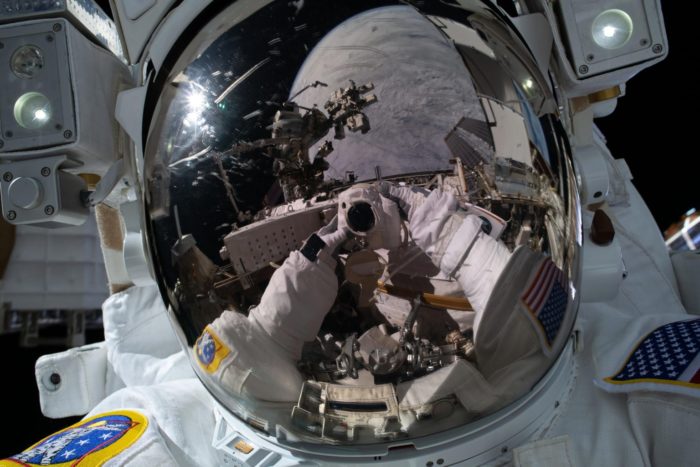 NASA recently confirmed their plans for the International Space Station (ISS) – they will keep the station operational through 2030 and then sometime in 2031 ditch it into the sea. They will be aiming for point Nemo, which is the location in the Pacific ocean that is furthest from any land, 2688 km. It is unfortunate that it is not feasible to push the station instead into a safe orbit, out of the way where it can remain as a museum of sorts. But it is best to keep low Earth orbit clear of debris as much as possible, so ditching it is the safest thing to do.
NASA recently confirmed their plans for the International Space Station (ISS) – they will keep the station operational through 2030 and then sometime in 2031 ditch it into the sea. They will be aiming for point Nemo, which is the location in the Pacific ocean that is furthest from any land, 2688 km. It is unfortunate that it is not feasible to push the station instead into a safe orbit, out of the way where it can remain as a museum of sorts. But it is best to keep low Earth orbit clear of debris as much as possible, so ditching it is the safest thing to do.
Meanwhile, the ISS has about nine years of life left and there is a lot of science planned for that time. They are currently giving the station a power upgrade, installing new batteries and equipment to allow for the addition of a new solar array to give the station more power.
One of the primary missions of the ISS is to be a laboratory for experiments on the long term effects of living in microgravity and ways to mitigate them. Right now NASA (or any other space agency) has no plans to develop true artificial gravity for their deep space missions. Essentially there are two methods for creating artificial gravity. One is constant acceleration, but we do not have the technology to develop a drive that can create significant G-forces for any significant length of time. We essentially have craft (like ion drive or perhaps solar sails) that can produce very slight acceleration for a long time. Or we have chemical rockets that can produce high acceleration for a short time. Even nuclear powered ships would spend most of their time on long trips (to Mars, for example) coasting. So this is simply not practical.
The other form of artificial gravity is rotation. There are practical limiting factors here as well. First, any rotating structure would have to be very large, on the order of a kilometer or more along its axis of rotation, in order to minimize vertigo and disorientation. This is not practical for any current spaceship design. We may have a space station that uses rotation for artificial gravity sometime this century, but likely not a space ship. Even clever designs, like having two capsules that are attached by a strong cable that, once the ship is coasting, can extend out from each other, forming a long axis that can rotate, will have significant engineering challenges. NASA’s current attitude is – not anytime in the foreseeable future.
Continue Reading »
Feb
14
2022
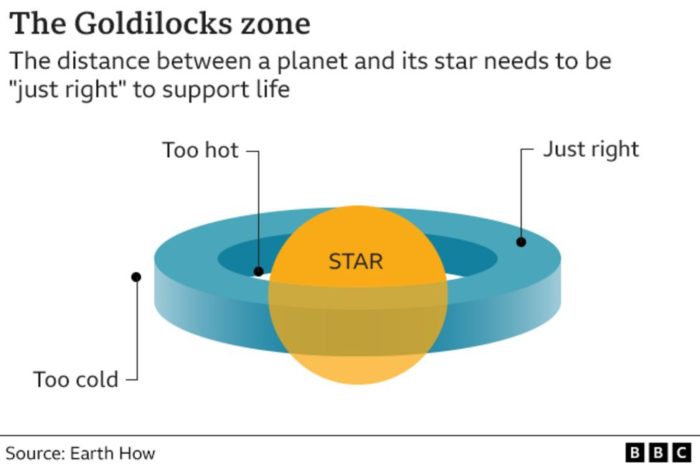 Astronomers may have discovered a planet around a white dwarf, and more importantly the planet (if it is real) exists in the habitable zone of the system. This is not the first planet found around a white dwarf – the first was a Jupiter-sized planet found around a white dwarf 6,500 light years away. The find is being touted as indicating the possibility of life, because the planet is in the so-called Goldilocks zone, but that is actually not plausible for several reasons.
Astronomers may have discovered a planet around a white dwarf, and more importantly the planet (if it is real) exists in the habitable zone of the system. This is not the first planet found around a white dwarf – the first was a Jupiter-sized planet found around a white dwarf 6,500 light years away. The find is being touted as indicating the possibility of life, because the planet is in the so-called Goldilocks zone, but that is actually not plausible for several reasons.
White dwarfs are the remnant cores of smaller suns, like the size of our own. When stars die they blow off their outer layers, leaving a hot core behind. If they are large enough that core collapses into a neutron star. And for the largest stars the core will collapse into a black hole. But for sun-sized stars the core remains a hot ember, about the size of a planet like Earth but with 60% or so of its original mass, so extremely dense. White dwarfs will burn hot for billions of years – so why is it improbable that any such planets close to a white dwarf will harbor life?
First, in the process of dying stars will first expand. Our own sun will expand, becoming a red giant, with the surface extending beyond the current orbit of Mars. Any planets in the inner solar system, therefore, will be consumed. Planets just outside this range will likely have any atmospheres stripped away. It is therefore very likely that any life in such a system would be destroyed in the process. It’s possible that a distant Jovian planet with an icy moon harboring life in a deep ocean may survive, but no planet with life living on the surface.
Continue Reading »
Jan
24
2022
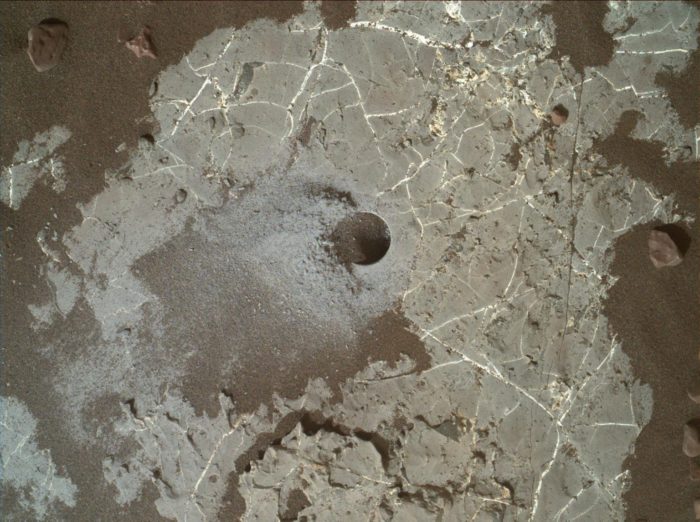 Was there ever or is there currently any life on Mars is one of the biggest scientific questions of our time. If we do manage to find the remnants of life on Mars, we may be able to ask a deeper question – what is the relationship between that life and life on Earth? Are they related or completely independent? This, in turn, informs our speculations about how common life is in the Universe. For how, however, the question about life on Mars in an open one.
Was there ever or is there currently any life on Mars is one of the biggest scientific questions of our time. If we do manage to find the remnants of life on Mars, we may be able to ask a deeper question – what is the relationship between that life and life on Earth? Are they related or completely independent? This, in turn, informs our speculations about how common life is in the Universe. For how, however, the question about life on Mars in an open one.
There are essentially three lines of evidence we can potentially bring to bear to help answer this question. The first, of course, would be the direct detection of extant life on Mars. If little critters are still metabolizing in the soil of Mars we could detect the products of their metabolism, and perhaps even detect the critters themselves. The second method is to detect the conditions for life, either at present or in ancient Mars. It now seems likely, for example, that ancient Mars had liquid water on its surface, which is a very compatible environment for life.
The final method is to detect fossil evidence of life on Mars. This does not have to be literal “fossils” as most people think of the term, meaning petrified bones, but rather some signature of life in the Martian environment. One of the missions of the Perseverence rover on Mars is to look for these signatures, and to prepare samples for possible return to Earth. But don’t forget about the Curiosity rover, which is still roving around Mars. Recently Curiosity concluded an analysis of Martian rock which produced some very – curious – results, that could be a possible signature of past life on Mars (“possible” being the operative word there).
The experiment involved heating 24 different powdered rock samples (some from rock beds known to be ancient) to release gases, then measuring the ratio of C13 to C12 released, and finding a depleted C13 ratio, which could be an indication of life. Some background is needed here. Isotopes are different kinds of an element with different numbers of neutrons. Elements are determined by their number of positively-charged protons, with carbon having six protons. Neutrons have no charge but do affect the total mass of the atoms. The most common isotope of carbon is C12, with six protons and six neutrons. The second most common isotope is C13, with seven neutrons. Both of these isotopes are stable, meaning they do not decay over time.
Continue Reading »
Jan
20
2022
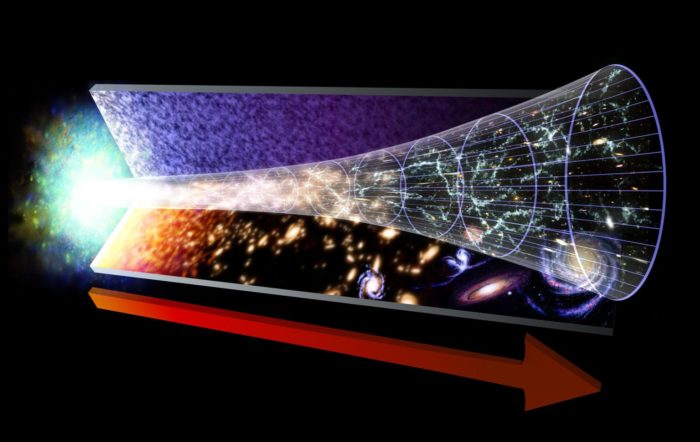 Arguably the biggest question is cosmology is where the Big Bang came from. We can extrapolate back from our observations of the universe and draw some high confidence conclusions. Since the universe is expanding, if we rewind time then the universe would contract as we go back in time until – it must have been a single point, an original singularity. The moment this point expanded rapidly into the universe was the Big Bang, but where did all the matter and energy that make up the universe come from to begin with? To make matters more confusing, the Big Bang also created space-time, so any reference to things happening at or before the Big Bang is tricky.
Arguably the biggest question is cosmology is where the Big Bang came from. We can extrapolate back from our observations of the universe and draw some high confidence conclusions. Since the universe is expanding, if we rewind time then the universe would contract as we go back in time until – it must have been a single point, an original singularity. The moment this point expanded rapidly into the universe was the Big Bang, but where did all the matter and energy that make up the universe come from to begin with? To make matters more confusing, the Big Bang also created space-time, so any reference to things happening at or before the Big Bang is tricky.
We can actually do experiments to test our ideas about the very early universe (less than a second after the Big Bang) by reproducing these high energies in particle accelerators. But at some point the energies exceed anything we can produce, and we are in the realm of purely theoretical physics. The question of where the singularity that became the Big Bang came from fits into this category.
There is no shortage of hypotheses about where the universe came from. One question is whether or not the universe could have come from literally nothing. This is a deep question that would take a book-length discussion to explore fully. My very basic understanding is that there are essentially two camps. The first states that something cannot come from nothing, and therefore there always had to be something, even if it was only a quantum fluctuation similar to what exists in “empty” space within our universe. Even the emptiest of space still contains a quantum “foam” of energy with particles briefly coming into existence and then annihilating each other. Maybe the entire universe is a giant quantum fluctuation in some grander quantum foam.
Continue Reading »
Jan
14
2022
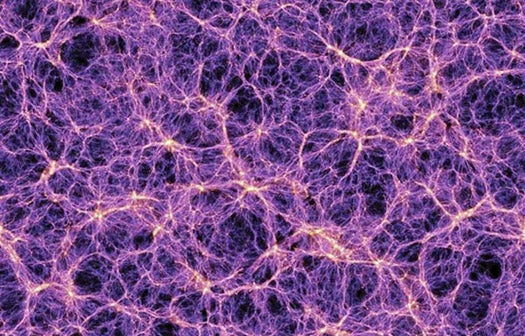 The first day of my high school astronomy class the teacher began with a task – draw the universe. It was a clever way to engage the class, and immediately brought home that none of us had any idea what the universe, as a whole, looked like. Part of our ignorance was due to the fact that scientists didn’t know much about the structure of the universe at the time (1981). This was before we knew about dark matter or dark energy, knew that the universe’s expansion was accelerating, or had many of the modern instruments we now have to survey the universe and build a model. Most of us just drew a bunch of galaxies, but had no idea about the highest level order of structure.
The first day of my high school astronomy class the teacher began with a task – draw the universe. It was a clever way to engage the class, and immediately brought home that none of us had any idea what the universe, as a whole, looked like. Part of our ignorance was due to the fact that scientists didn’t know much about the structure of the universe at the time (1981). This was before we knew about dark matter or dark energy, knew that the universe’s expansion was accelerating, or had many of the modern instruments we now have to survey the universe and build a model. Most of us just drew a bunch of galaxies, but had no idea about the highest level order of structure.
In the forty years since astronomers have been refining our map of the universe. Recently an international team of scientists have built the largest 3D model of the universe to date, using the Dark Energy Spectroscopic Instrument (DESI). We have peered at the universe not only in visible light, but in infrared, ultraviolet, X-rays, and radio waves. We have also discovered new techniques such as gravitational wave astronomy and neutrino detectors, and a host of new phenomena such as fast radio bursts. Just the idea of mapping the dark energy of the universe was not conceived of back then.
So, if I (or more to the point, a team of expert astronomers) were asked to draw the universe, what would that look like? First we need to consider the fact that the question itself needs some clarification. The picture of the universe would look different in the various electromagnetic spectra. A radio map of the universe looks very different from an infrared map of the universe. We often assume we mean a visible light map, but that is not necessarily the case. Also – what are we mapping, baryonic matter, dark matter, dark energy, or all three? Further, the universe is four dimensional, and how are we going to represent this? Yes, I meant four dimensional, it has three spacial and one temporal dimension (that we know of). When we look out into the universe, we are also looking back in time. We can’t ever see the entire universe at once, as it is “now”. In fact “now” is a tricky concept when dealing with such scales. And finally we can only see (by definition) the visible universe, but we know there is much more we can’t see (because it is beyond the envelope of the speed of light – we can’t see past the beginning of the universe).
What I am really interested in is a mental map of the universe, so we don’t have to worry about how we are going to represent it. Let’s just build our mental map.
Continue Reading »
Nov
23
2021
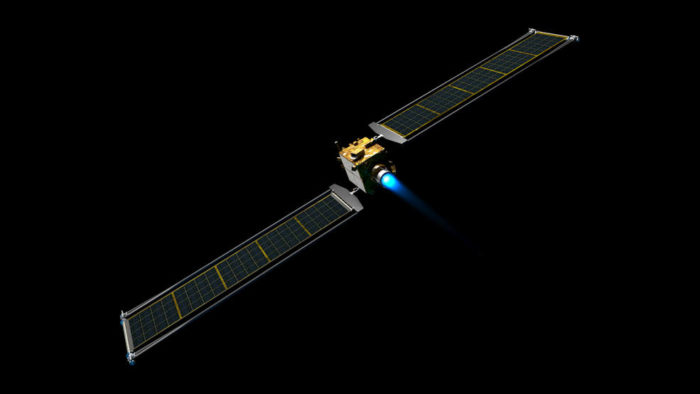
Why is NASA planning on deliberately crashing a spacecraft into a small asteroid that poses no threat to the Earth? It’s a test of an asteroid deflection system – DART (Double Asteroid Redirection Test). Why the “double”? Most articles on the topic don’t say, and I had two hypotheses. The first is that the mission is targeting two asteroids, or actually a binary asteroid, Didymos (Greek for “twin”). Didymos has a primary asteroid that’s 780 meters across, and a smaller secondary asteroid 160 meters across that actually orbits the primary asteroid, and is therefore called a “moonlet”. However, the mission was originally supposed to be part of a pair of missions, with the second one by the ESA who were going to send their AIM probe to orbit and monitor Didymos during the DART mission. The ESA cancelled this mission, however, and now Didymos will be monitored by ground telescopes. But it turns out the “double” refers to the twin asteroids.
In any case, the purpose of the mission is to test out an asteroid defense system known as a kinetic impactor. The course of an asteroid can be altered by ramming something into it very fast. At first this seems like a crude method, but sometimes simple is best. The mission is part of NASA’s Planetary Defense Coordination Office. The European Space Agency (ESA) is also engaged in planetary defense, although their cancelling of AIM was disappointing. There are also international meetings on planetary defense, with calls for the USA, Russia and China to work together on this project. Russia, for their part, has proposed repurposing old ICBMs as asteroid busters. This would not be a kinetic impactor, but actually use nukes to blow up asteroids.
The DART mission is the first real test of an asteroid defense system. The spacecraft uses electric motors powered by solar panels, and will be going 6.6 km/s when it impacts the smaller Didymos asteroid. This impact will only divert the orbit of the asteroid by less than a percent, but that will be enough to change its orbit around the larger asteroid by several minutes, which can be observed from Earth. The craft is scheduled to launch tonight, November 23rd, at 10:21 pm PST aboard a SpaceX Falcon 9 rocket. It will intercept Didymos in late September 2022.
Continue Reading »
Nov
16
2021
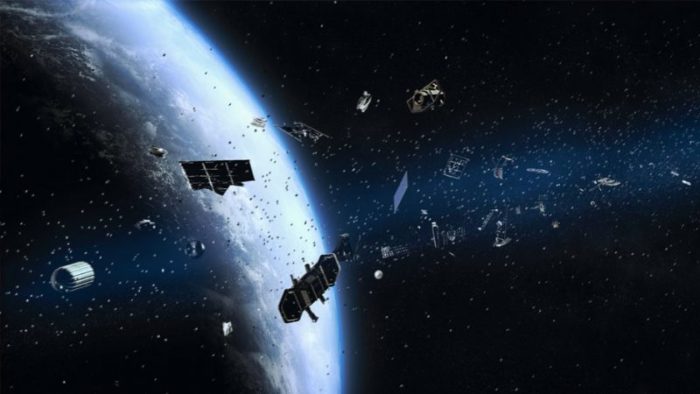 In the movie Gravity (one of my favorite movies, highly recommended), the Russians shoot down one of their own satellites in order to test their anti-satellite system. The debris from this satellite crashes into other satellites causing a cascade of debris, which travels around the Earth eventually crashing into the ISS and a space shuttle in low Earth orbit. I have to point out that the orbital mechanics in the movie are terrible. One big problem is that objects in the same orbit are going the same velocity, by definition. So the debris would not have been flying by so fast. But putting all that aside, the core concept that space debris is a huge problem, and blowing up satellites in orbit is a horrifically bad idea, is valid.
In the movie Gravity (one of my favorite movies, highly recommended), the Russians shoot down one of their own satellites in order to test their anti-satellite system. The debris from this satellite crashes into other satellites causing a cascade of debris, which travels around the Earth eventually crashing into the ISS and a space shuttle in low Earth orbit. I have to point out that the orbital mechanics in the movie are terrible. One big problem is that objects in the same orbit are going the same velocity, by definition. So the debris would not have been flying by so fast. But putting all that aside, the core concept that space debris is a huge problem, and blowing up satellites in orbit is a horrifically bad idea, is valid.
Which is why it is head scratching that 8 years after Gravity came out Russia would blow up one of its own satellites in orbit in order to test its anti-satellite system. Didn’t anyone in Russia see this movie? More seriously, they should know that this is a terrible idea, contributing significantly to the problem of space debris. The US and other space-faring nations are not happy. In a state department release they said:
“The test has so far generated over 1,500 pieces of trackable orbital debris and hundreds of thousands of pieces of smaller orbital debris that now threaten the interests of all nations.”
The astronauts aboard the ISS had to shelter in capsules for safety as a result of the debris. Our goal is to reduce space debris, not significantly increase it. Russia is not the first country to do this. In 2007 China destroyed one of its defunct weather satellites, producing more than 2,000 pieces of trackable debris. After nearly 65 years of putting satellites into orbit, there are now over a million pieces of debris between 1 and 10 cm orbiting the Earth. NASA is tracking 27,000 pieces of larger debris. While space may seem big, low Earth orbit is finite and valuable real estate. Having more than a million pieces of debris flying around is a significant risk. They can damage satellites and threaten crewed missions, such as the ISS. In fact the ISS frequently has to adjust its orbit in order to avoid tracked debris.
Continue Reading »
Nov
08
2021
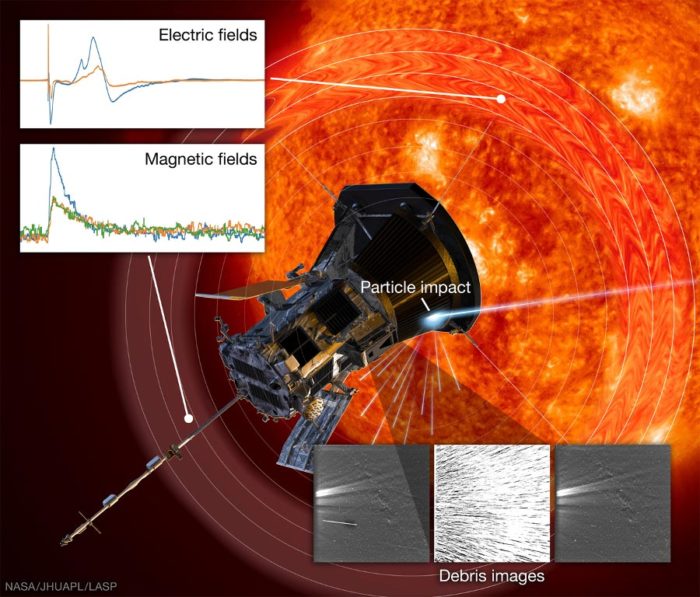 Space is an incredibly hostile environment, and we are learning more about the challenges of living and traveling in space the more we study it. Apart from the obvious near vacuum and near absolute zero temperatures, space is full of harmful radiation. We live comfortably beneath a blanket of protective atmosphere and a magnetic shield, but in space we are exposed.
Space is an incredibly hostile environment, and we are learning more about the challenges of living and traveling in space the more we study it. Apart from the obvious near vacuum and near absolute zero temperatures, space is full of harmful radiation. We live comfortably beneath a blanket of protective atmosphere and a magnetic shield, but in space we are exposed.
Traveling through space adds another element – not only would radiation be passing through us, the faster our ship is traveling the more stuff we would be plowing through. Space is not empty, it is full of gas and dust. In our own solar system, most of the dust is confined to the plane of the ecliptic, in what’s called the zodiacal cloud. But of course, if we are traveling from one planet to another, that would be the plane we are traveling in. At interplanetary velocities, assuming we want to get to our destination quickly (which we do, to minimize exposure to all that radiation) our craft would be plowing through the zodiacal cloud.
We now have some measurements from The Parker Solar Probe regarding the effects of impacts with dust at high velocity. The Parker probe is the fastest human object at 180 kilometers per second. It is also the closest probe ever to the Sun and the one able to operate at the highest temperature. To accomplish this it must keep its heat shield oriented toward the sun. Meanwhile it is encountering thousands of dust particles, tiny grains between 2 and 20 microns in diameter (less than that standard measure of all things tiny, the width of a human hair). We now have data from the probe about the effect of these impacts. Dust grains are striking the probe at hypervelocity, greater than 10,800 km per hour. When they hit they are instantly heated and vaporized, along with a small portion of the surface of the probe. The resulting cloud of debris is also hot enough to become ionized, turning into a plasma. Smaller grains are entirely vaporized in less than a thousandth of a second. Larger grains also give off a cloud of debris that expands away from the craft.
The authors report that the effect of this is:
Some of the impactors encountered by Parker Solar Probe are relatively large, resulting in plasma plumes dense enough to (i) refract natural plasma waves away from the spacecraft, (ii) produce transient magnetic signatures, (iii) and drive plasma waves during plume expansion. Further, some impacts liberate clouds of macroscopic spacecraft material which can result in electrostatic disturbances near the spacecraft that can linger for up to a minute, which is ~10,000 times longer than the transient plasma plume.
Continue Reading »
 As the number of confirmed exoplanets grows (we just passed the 5,000 mark) attention is turning toward determining more about these planets orbiting other stars. The most compelling question, of course, is whether or not they are capable of containing life, and if they actually do have life. If a planet did sport life around a star tens or hundreds of light years away, how would we know? There are two basic approaches – looking for technosignatures and biosignatures. A technosignature is a sign of advanced technology, like heat radiating from a massive structure. But this also requires an advanced technological civilization, not just life. Biosignatures are just signs of life, even simple bacteria.
As the number of confirmed exoplanets grows (we just passed the 5,000 mark) attention is turning toward determining more about these planets orbiting other stars. The most compelling question, of course, is whether or not they are capable of containing life, and if they actually do have life. If a planet did sport life around a star tens or hundreds of light years away, how would we know? There are two basic approaches – looking for technosignatures and biosignatures. A technosignature is a sign of advanced technology, like heat radiating from a massive structure. But this also requires an advanced technological civilization, not just life. Biosignatures are just signs of life, even simple bacteria.

 NASA recently
NASA recently  Astronomers
Astronomers  Was there ever or is there currently any life on Mars is one of the biggest scientific questions of our time. If we do manage to find the remnants of life on Mars, we may be able to ask a deeper question – what is the relationship between that life and life on Earth? Are they related or completely independent? This, in turn, informs our speculations about how common life is in the Universe. For how, however, the question about life on Mars in an open one.
Was there ever or is there currently any life on Mars is one of the biggest scientific questions of our time. If we do manage to find the remnants of life on Mars, we may be able to ask a deeper question – what is the relationship between that life and life on Earth? Are they related or completely independent? This, in turn, informs our speculations about how common life is in the Universe. For how, however, the question about life on Mars in an open one. Arguably the biggest question is cosmology is where the Big Bang came from. We can extrapolate back from our observations of the universe and draw some high confidence conclusions. Since the universe is expanding, if we rewind time then the universe would contract as we go back in time until – it must have been a single point, an original singularity. The moment this point expanded rapidly into the universe was the Big Bang, but where did all the matter and energy that make up the universe come from to begin with? To make matters more confusing, the Big Bang also created space-time, so any reference to things happening at or before the Big Bang is tricky.
Arguably the biggest question is cosmology is where the Big Bang came from. We can extrapolate back from our observations of the universe and draw some high confidence conclusions. Since the universe is expanding, if we rewind time then the universe would contract as we go back in time until – it must have been a single point, an original singularity. The moment this point expanded rapidly into the universe was the Big Bang, but where did all the matter and energy that make up the universe come from to begin with? To make matters more confusing, the Big Bang also created space-time, so any reference to things happening at or before the Big Bang is tricky. The first day of my high school astronomy class the teacher began with a task – draw the universe. It was a clever way to engage the class, and immediately brought home that none of us had any idea what the universe, as a whole, looked like. Part of our ignorance was due to the fact that scientists didn’t know much about the structure of the universe at the time (1981). This was before we knew about dark matter or dark energy, knew that the universe’s expansion was accelerating, or had many of the modern instruments we now have to survey the universe and build a model. Most of us just drew a bunch of galaxies, but had no idea about the highest level order of structure.
The first day of my high school astronomy class the teacher began with a task – draw the universe. It was a clever way to engage the class, and immediately brought home that none of us had any idea what the universe, as a whole, looked like. Part of our ignorance was due to the fact that scientists didn’t know much about the structure of the universe at the time (1981). This was before we knew about dark matter or dark energy, knew that the universe’s expansion was accelerating, or had many of the modern instruments we now have to survey the universe and build a model. Most of us just drew a bunch of galaxies, but had no idea about the highest level order of structure.
 In
In  Space is an incredibly hostile environment, and we are learning more about the challenges of living and traveling in space the more we study it. Apart from the obvious near vacuum and near absolute zero temperatures, space is full of harmful radiation. We live comfortably beneath a blanket of protective atmosphere and a magnetic shield, but in space we are exposed.
Space is an incredibly hostile environment, and we are learning more about the challenges of living and traveling in space the more we study it. Apart from the obvious near vacuum and near absolute zero temperatures, space is full of harmful radiation. We live comfortably beneath a blanket of protective atmosphere and a magnetic shield, but in space we are exposed.




